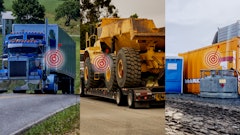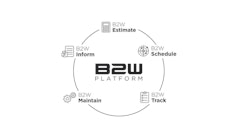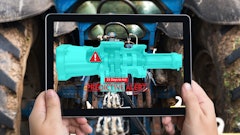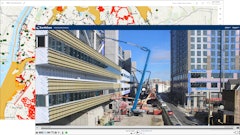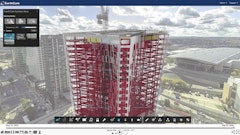
Telematics has proven to be a game changer for the construction industry, delivering transparency into equipment operation and performance. Yet, there is a risk of too much of a good thing for both customers and for the dealers tasked with managing incoming data on their behalf.
“There is a certain data overload,” said Peter Mayr, president, Liebherr Construction Equipment, during an OEM panel at the 2019 AED Summit in Orlando, FL. “Some of our dealers use the data really well. They are ahead of things, and they are probably our most successful dealers. They are proactive; they watch the machines for the customers... But it’s still a certain information overload.”
And further potential for data capture is starting to emerge. “We will get to the point where components have sensors that will tell you... you need to change me before I fail,” Mayr said. This has already started in the mining industry. “You have very clear indicators in the components when they wear out and when they will fail.”
Construction equipment components could soon head in this direction. “We just need to be careful that we don’t overload people with information. We need to filter it so that what they get out of it is meaningful,” Mayr cautioned.
Dealer relationships are critical to this process, and can be viewed as a differentiator in the eyes of contractors. “The dealer having a strong relationship with a given customer has the opportunity to prove to that customer that they add value,” said Jason Daly, global director, marketing & support, John Deere Construction & Forestry. “And they can add value by maybe answering the questions before the questions are asked, and ultimately resolving the customer’s problems before the customer is even aware.”
Get More From Telematics By Letting Dealers Assist with Data Analysis
OEMs can play a pivotal role in delivering such value, as well. Consider Volvo Construction Equipment (Volvo CE), which collects the data from its machines in a central location and filters it for dealers and customers. “We’re able to look at the data and any particular fault codes and push information out to our dealers,” said Stephen Roy, president, sales, Region Americas. “Our dealers actually have a 95% chance that if they take this route with these parts in their service vehicle, they will solve the problem.”
Dealers are able to focus on the repair rather than the diagnostics. “It’s actually taken the diagnostics time down. That’s important,” said Roy.
And there’s more value potential to come – for example, in the form of predictive analytics. “We’re trying that now with certain customers and dealers to find just the right model,” Roy noted.
The most pressing need is to figure out what else you can be done with the data that already exists. “That’s a conversation we’re having with dealers to ensure they have a voice with the customer on improving productivity and machine performance,” said Roy.
The demands to deliver value-added data-related services will continue to expand. Where once John Deere had to push telematics implementation, now “we’re being pulled by customers and dealers today to do more and to do more faster, and to deliver more prediction than we’ve seen in the past to create that available uptime that customers in the future are going to expect,” Daly indicated. “We need to find ways to deliver that.”
There are certain dealers leading the way and there those who aren’t quite there yet. “Our challenge as a manufacturer is to try to get people up to speed as quickly as we can to take advantage of the technology that’s out there,” Daly said. He noted a time when manufacturers hadn’t considered the need to have data scientists on staff. “Now the dealers have to start thinking about that.
“The winners are the ones who figure out how to take that data and segment it and analyze it and do something with it,” he continued, “again, ultimately with the goal of providing customers with some sort of enhanced service — something to make their business better than it was before.”













